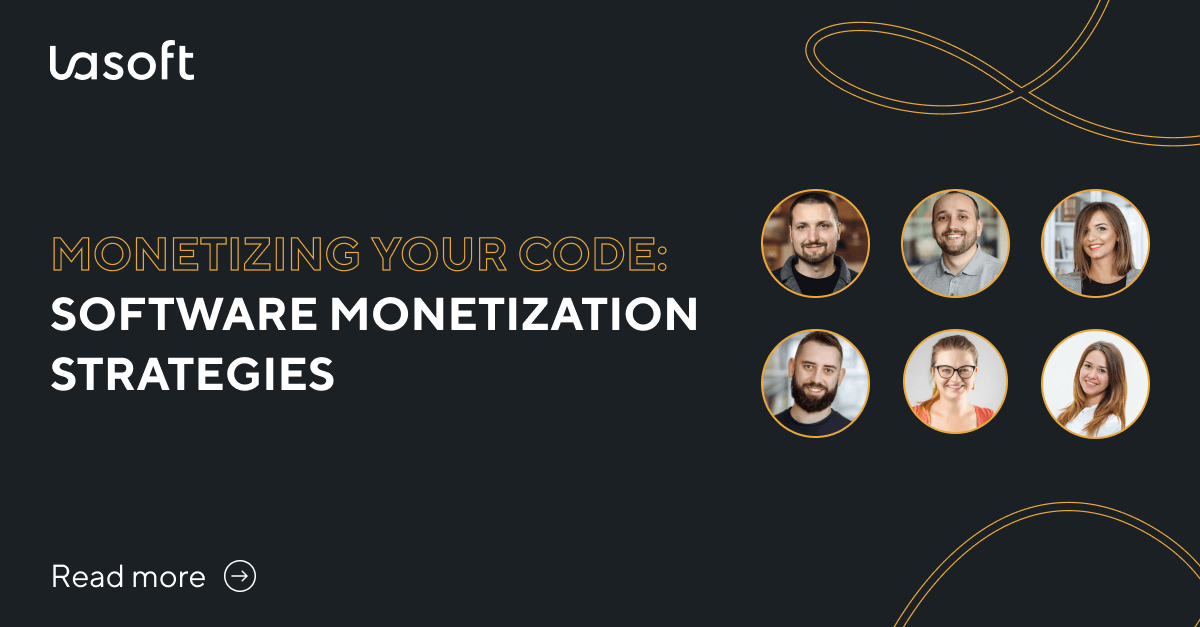Today we’re delving into the realm of software monetization – the strategies that can turn your code into cash. Whether you’re a startup founder, an indie developer, or part of a larger tech company, understanding how to effectively monetize your software is crucial for your success.
Introduction to Software Monetization
First things first, what is software monetization? It’s the strategy or set of strategies a company or individual employs to generate revenue from a software product. These strategies can vary widely depending on the type of software, target audience, and overall business goals. Today, we’ll explore some of the most common and emerging monetization models in the software industry.
Traditional Monetization Models
Let’s kick things off with traditional monetization models. The most straightforward one is the one-time purchase model. This is where users pay a single fee to obtain a perpetual license for the software. Microsoft Office was a classic example of this model before transitioning to a subscription-based approach. The key advantage here is simplicity – users know exactly what they’re getting for their money. However, this model can pose challenges in generating long-term revenue and maintaining a steady cash flow.
Andriy Tatchyn, CEO at LaSoft: “The one-time purchase model can be great for software with a long shelf-life and minimal need for updates. However, in today’s fast-paced tech environment, continuous updates and support are often necessary, which is why many developers are looking towards more dynamic models.”
Subscription-Based Models
This brings us to the subscription-based model, a popular approach in the SaaS (Software as a Service) world. Here, users pay a recurring fee – monthly or annually – for access to the software. Adobe Creative Cloud and Salesforce are prime examples. The subscription model ensures a consistent revenue stream and can build a long-term relationship with customers. Plus, it aligns well with the need for ongoing maintenance and updates.
Vasyl Varkholyak, CTO at LaSoft: “The subscription model aligns the interests of both users and developers. Users get continuous improvements and support, while developers have a predictable revenue stream that helps in planning and scaling the business.”
Freemium and Free Trials
Another popular approach is the freemium model. Here, the basic version of the software is free, but users can pay for premium features. Think of Spotify or LinkedIn. This model can be highly effective in building a large user base quickly. However, converting free users to paying customers can be a challenge.
Dmytro Bilyk, Delivery Manager at LaSoft: “With the freemium model, the key is to offer enough value in the free version to attract users, but reserve some of your best features for the premium version. It’s a delicate balance.”
Advertising and Affiliate Marketing
Some software developers choose to monetize their products through advertising or affiliate marketing. This model works well for software with a large user base, where direct sales might not be feasible. For example, mobile apps and browser extensions often use this model. The downside? It can potentially impact the user experience if not implemented thoughtfully.
Anastasiia Tumanova, Product Design Office Head at LaSoft: “Ads can be a great way to generate revenue, especially for free apps. But it’s essential to keep the holistic picture of the user experience in mind and not let the ads become too distracting from the main job to be done there. Maybe even answer the question: “Will this ad bring value to my user and enrich the customer experience?”
Licensing and White Labeling
Another avenue for monetization is through licensing or white labeling. This is where you sell your software to other businesses who then rebrand it as their own. It’s a great way to expand your reach without direct marketing and can be particularly lucrative for B2B software.
Solomiia Vuitsyk, Partnership Lead at LaSoft: “White labeling allows you to provide your clients with a ready-to-use software solution that they can brand as their own. It’s a win-win – they save on development costs, and you gain a steady revenue stream.”
Pay-Per-Use and Microtransactions
Then there’s the pay-per-use model, where users are charged based on their usage of the software. This can be an attractive option for software with sporadic or unpredictable usage patterns. Similarly, microtransactions – small in-app purchases – are common in mobile games and certain types of applications.
Yulia Mahera, Business Analyst at LaSoft: “Microtransactions allow users to enhance their experience or gain certain advantages in a game. When done right, it can significantly boost revenue without alienating users.”
Emerging Trends in Software Monetization
As we wrap up, let’s touch upon some emerging trends in software monetization. One area gaining traction is the use of blockchain and cryptocurrencies for transactions within software ecosystems. Another trend is the increasing focus on value-based pricing, where the price is determined by the value delivered to the customer rather than the cost of the product.
Andriy Tatchyn, CEO at LaSoft: “The future of software monetization is about aligning pricing with the value delivered. We’re seeing more personalized and dynamic pricing models that reflect the unique needs and usage patterns of each customer.”
Table: Summary of Software Monetization Strategies
| Monetization Strategy | Description | Ideal For | Pros | Cons |
|---|---|---|---|---|
| One-Time Purchase | Users pay a single fee for a perpetual license. | Software with long shelf-life, minimal updates | Simple, upfront revenue | Limited long-term revenue, less adaptable to updates |
| Subscription-Based | Users pay a recurring fee (monthly/annually) for access. | Services needing regular updates and support | Steady revenue stream, fosters customer loyalty | Requires continuous value delivery, user retention effort |
| Freemium | Basic version is free, but premium features cost extra. | Apps seeking large user base, scalable products | Builds large user base quickly | Converting free users to paying customers can be hard |
| Advertising | Revenue generated through displaying ads within the software. | High-traffic apps, consumer-focused software | Can be lucrative with large user base | Can impact user experience if not done tactfully |
| Affiliate Marketing | Earning commissions by promoting other companies' products or services within the software. | Niche software with specific user interests | Generates revenue without direct sales | Dependent on external partnerships, user base interests |
| Licensing/White Labeling | Selling software to other businesses to rebrand and use as their own. | B2B software solutions, scalable enterprise tools | Expands reach without direct marketing | Relies on business clients, less control over end usage |
| Pay-Per-Use | Charging users based on their usage of the software. | Software with irregular usage patterns | Flexible for users, aligns cost with usage | Revenue less predictable, complex billing systems |
| Microtransactions | Small in-app purchases for additional features or enhancements, especially in games and interactive apps. | Mobile games, applications with in-app enhancements | Can significantly boost revenue | Risk of alienating users if perceived as necessary |
| Emerging Trends | Includes blockchain, cryptocurrencies, personalized pricing, value-based models. | Innovative, tech-forward software | Aligns with modern technology trends, personalized | Still evolving, requires understanding of new tech |

Conclusion
And that’s a wrap on today’s talk about software monetization strategies. Whether you’re developing your first app or running a mature software company, understanding and choosing the right monetization strategy can be the key to your success.
We’ve covered a lot of ground today discussing various software monetization strategies, but this conversation doesn’t end here. We want to hear from you! Which monetization model do you find most effective? Do you have any unique experiences or insights to share? Maybe you’ve tried a strategy that worked exceptionally well or faced challenges with a particular model.
Your experiences and thoughts are invaluable to this community. So, head over to the comments section of this post – whether it’s on our website, the YouTube platform, or our social media channels – and let us know your thoughts. Share your stories, ask questions, or provide feedback. We’re here to learn from each other, and your input is a vital part of this learning process.
Don’t forget to subscribe to our Software Development Blog for more discussions on software development. Until next time, keep coding and innovating!



